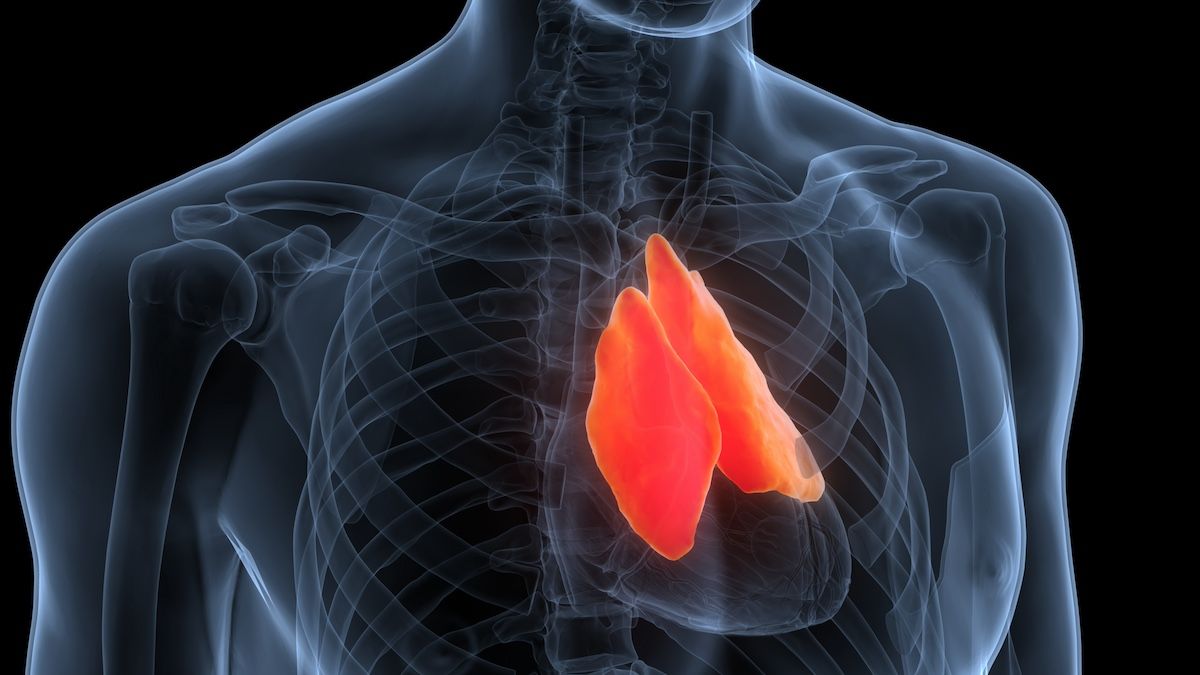- Center on Health Equity & Access
- Clinical
- Health Care Cost
- Health Care Delivery
- Insurance
- Policy
- Technology
- Value-Based Care
Small Study Shows Benefit With Minimally Invasive Thymectomy in MG
Thoracoscopic thymectomy yielded quicker recovery time in myasthenia gravis (MG) while reducing disease severity, the need for treatment, and complications.
A minimally invasive approach to thymectomy may be a more effective approach for thymus gland removal in patients with myasthenia gravis (MG).
Findings from a small study, detailed in Journal of Cardiothoracic Surgery, showed that compared with transsternal thymectomy, thoracoscopic thymectomy yielded quicker recovery time while reducing disease severity, the need for treatment, and complications.1
“Some surgeons prefer the transsternal approach due to [its] extensive approach for thorough exploration of the mediastinum up to the neck and [that it] enables complete removal of thymic tissue and fat,” explained the researchers. “On the other hand, one of the best surgical approaches for thymectomy is video-assisted thoracoscopic surgery (VATS), which is considered a less invasive method and suitable for patients with a diagnosis of myasthenia gravis. Some studies have shown that using minimally invasive techniques such as video-assisted and robot-assisted approaches are associated with fewer complications and mortality compared to transsternal techniques, while achieving similar therapeutic outcomes.”
Although some research has suggested benefit of thoracoscopic thymectomy,2 other data are conflicting, requiring more research into the most optimal approach to thymectomy, explained the researchers.
In this study, thoracoscopic thymectomy yielded quicker recovery time and reduced disease severity, the need for treatment, and complications. | Image Credit: magicmine-stock.adobe.com

The current study included 70 patients undergoing thymectomy between 2011 and 2021 at a center in Iran, 70% of whom underwent left VATS, 20% of which underwent right VATS, and 10% of whom underwent midsternotomy. The researchers acknowledged the imbalance in surgical approach, noting the distribution mirrored the real-world practice at their center throughout the study period, with surgeon preference and perceived advantages of left VATS.
Patients receiving left VATS were more likely to have less severe disease after surgery, determined by Osserman classification, with a higher rate of class I classifications (P = .023). Overall thymectomy was associated with improved disease severity, with the proportion of patients achieving class 1 increasing from 11.42% before surgery to 80% postsurgery.
Prior to surgery, 94.29% of patientswere receiving corticosteroids, which dropped to 60.00% after surgery (P = .001). Similarly, use of intravenous immunoglobulin dropped from 61.43% to 40.00% (P = .015) after surgery.
Across the study period, there were no significant differences in bleeding rates, medication use, disease severity, intensive care unit admissions, or readmissions between patients undergoing left VATS and right VATS.
“The high readmission rate of 34.28% observed in this study warrants further investigation to identify the underlying causes and implement strategies to reduce readmissions,” wrote the researchers, referring to readmission within 30 days after surgery.“Potential reasons for this finding could include postoperative complications, disease exacerbations, or inadequately managed comorbidities during the initial hospital stay.”
Postoperative complications that may have contributed to readmissions included infection, occurring in 17.14% of patients, and bleeding, occurring in 1.42% of patients. The researchers noted that some patients may have also had temporary exacerbation of symptoms or medication adjustments that resulted in readmissions.
Hospital stays were, on average, 3 days longer for patients who underwent mid-ternotomy. However, this difference, explained the researchers, was not statistically significant (P = .086).
The researchers noted the lack of patient-reported outcomes collected in the study, which would have provided insight into quality-of-life improvements and satisfaction with their surgical approach.
References
1. Lashkarizadeh M, Haghollahi V, Nezhad NZ, Lashkarizadeh M, Shahpar A. Descriptive analysis of therapeutic outcomes between thoracoscopic and transsternal thymectomy in myasthenia gravis patients from 2011 to 2021. J CardiothoracSurg. Published online September 3, 2024. doi:10.1186/s13019-024-02983-6
2. Nguyen TG, Nguyen NT, Nguyen VN, Nguyen TK, Vu DT, Le VA. Video-assisted thoracoscopic surgery for myasthenia gravis with thymoma: a six-year single-center experience. Asian J Surg. 2021;44(1):369-373. doi:10.1016/j.asjsur.2020.10.006
